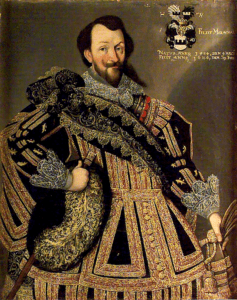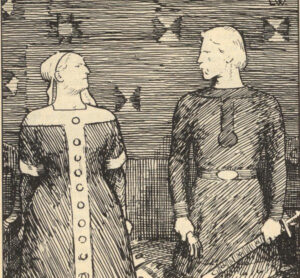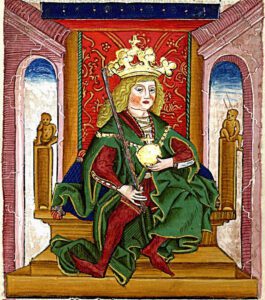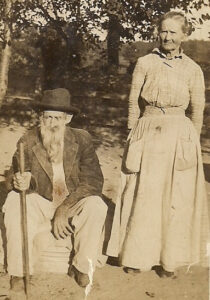
16 Jun Finding your Family Tree will create happiness and your legacy! Newsletter- June 18, 2022
Contents
- 1 FINDING YOUR FAMILY TREE- NOW HERE IS HOW YOU DECORATE!
- 2 FINDING YOUR FAMILY TREE – DAD, QUIT STARING AT MY FIANCE!
- 3 MY KIND OF PUB!
- 4
- 5 WHERE DO YOU KEEP YOUR HORSES?
- 6 FAMILY TREE CRAZINESS THE CONTINUING SAGA OF MY BAD GRANDMAS
- 7 WHY YOU SHOULD ALWAYS HAVE YOUR THRONE INSPECTED AFTER AN OVERTHROW
- 8 FINDING YOUR FAMILY TREE!
FINDING YOUR FAMILY TREE- NOW HERE IS HOW YOU DECORATE!
I came across this Sultan Family Tree with Osman I- Abdulhamid I (27 Ottoman emperors) at Gripsholms Castle in Mariefred, Sweden. Not where you expect to discover such an item necessarily. And speaking of family trees, I came across the story below
 FINDING YOUR FAMILY TREE – DAD, QUIT STARING AT MY FIANCE!
FINDING YOUR FAMILY TREE – DAD, QUIT STARING AT MY FIANCE!
Herman Wrangel came to Sweden around 1608. In 1612, he participated in the Kalmar War against Denmark. In 1619, Wrangel was commander of the Älvsborg fortress. He was appointed Field Marshal in 1621, Privy Councillor in 1630, and Governor-General of Swedish Livonia in 1643. Wrangel built Skokloster Castle in Sweden.
Wrangel was married three times. In 1636, he married Amalie of Nassau-Siegen, daughter of John VII, Count of Nassau-Siegen. He was the father of statesman and military commander Carl Gustaf von Wrangel (1613–1676).
In the church next to the castle are four family trees, three of which are elaborately painted, with the fourth one plain. The first three are Herman’s tree and his first two wives. The unpainted or decorated tree was Herman’s fourth wife, Amalie Magdalena von Nassau-Siegen (1613 – 1669).
Amalie was betrothed to Herman’s son Carl Gustaf (mentioned above), but Herman thought she was so beautiful that in 1636 he took her as his bride. Unfortunately, Herman died in 1643, and Amalie’s family tree was unfinished then. Because of that betrayal, Carl never had his stepmother’s family tree decorated, and it hangs plain and incomplete in the church.
 MY KIND OF PUB!
MY KIND OF PUB!
While in London, we visited Cambridge to visit our nephew stationed with the USAF at Lakenheath RAF flying F-35s.
He took us to a pub with some history. First, it is owned by Corpus Christi College and was founded in 1525.
Secondly, it is where beer was used to coax the first learnings about DNA out of scientific minds using beer as a lubricant.
Lastly, the RAF pilots of many generations gather there to share their stories as the English version of the Red Baron.
WHERE DO YOU KEEP YOUR HORSES?
Alfred Nobel was the wealthy inventor of dynamite and the benefactor of the Nobel Prize. Although Nobel died in San Remo, Italy, he also had a home in Paris, France, and a larger estate in Bofors, Sweden. Only one of these places could be his legal domicile, in effect, his real home, where the will was to be probated (he had no heirs).
It was not easy to determine, but a Swedish court finally found that Sweden was indeed the place of Nobel’s domicile. He had recently moved his horses to his home in Sweden before his death (criteria for determining legal domicile under French law).
Making Sweden the legal domicile was important as this meant that Swedish law applied to the will and that any objection thereto had to be presented in Sweden, and taxes on the estate should be paid in Sweden.
In fact, until 1946 (when a law change made it exempt), the Nobel Foundation paid taxes on its returns on investment in Sweden and was one of the largest taxpayers in Stockholm.
 FAMILY TREE CRAZINESS THE CONTINUING SAGA OF MY BAD GRANDMAS
FAMILY TREE CRAZINESS THE CONTINUING SAGA OF MY BAD GRANDMAS
The picture is of Olaf Tryggvason proposing marriage to Sigrid, imposing the condition that she must convert to Christianity. When Sigrid rejects this, Olaf strikes her with a glove. She warns him that this might lead to his death.
The Norwegian prince Harald Grenske fled to Sweden and joined the raiding band ofSkoglar Toste, the country’s richest and most distinguished untitled man. Toste had a daughter Sigríd, who was young, fair, and very arrogant, and who later would marry Swedish king Eric the Victorious and become the mother of King Olaf the Swede.
Eric the Victorious separated from Sigrid (known as Sigrid the Haughty or Proud) because of her difficult moods. He said that she was the most quarrelsome woman there ever existed. So he gave her Gautland as part of the separation. However, they never divorced, and Sigrid outlived Eric and became the wealthy queen dowager and mother of King Olaf. She was described as “the wisest of women and prophetic about many things”, she learns that Prince Harald is nearby on his way to raiding the Baltic Sea, and she invites him to a banquet and, afterward, personally serves him in his chamber.
However, Harald took offense the next day when she favorably compared her possessions and power in Sweden to his in Norway, leaving Harald sullen despite the great gifts she gave him. After stewing over this for a season, Harald again raided the Baltic and visited Sweden on his return. Sending for Sigrid, he proposed that they marry. She dismissed this, pointing out that he already had a wife, Asta, who seemed compatible with him, but he insisted Asta, though noble and good, was not as high-born as he.
After a few further cursory words, Sigrid rode away, and Harald again turned sullen before deciding to ride to her home to press his case. Taking a large body of men, he arrived to find another suitor also present, a king called Vissavaldr from Garoaríki. Both were housed in the same quarters and served large quantities of drink, and then in the night, she had her people set fire to the structure and kill anyone who made it out, declaring that this should prevent other petty kings from coming to her country to seek her hand. From thenceforth, she was called Sigríðr in stórráða, “Sigrid of the Great Undertakings.”
Olaf Tryggvasson, the King of Norway, apparently did not get the message. After exchanging messages, Olaf proposed they marry, and Sigrid agreed. In commemoration of this, Olaf sent her a great gold ring he had taken as a prize, but Sigrid’s goldsmiths discovered it to be only gold-plated brass, which made Sigrid question his truthfulness.
Then, when Olaf and Sigrid met in person, he insisted that to marry, she must convert to Christianity, to which she responded, “I shall not abandon the faith that I have previously held, as have my kinsmen before me. I shall also not object to your believing in whatever god you like.” In a rage, Olaf struck her with a glove, and Sigrid calmly told him, “That could well cost you your life”, and they parted.
Instead, he made an enemy of her and did not hesitate to involve himself in a quarrel with King Sweyn I of Denmark by marrying Sweyn’s sister Tyra. She had fled from her heathen husband Burislav, the semi-legendary “King of Wends”, in defiance of her brother’s authority.
His Wendish and Irish wives had brought Olaf wealth and good fortune, but, according to the Sagas, his last wife, Tyra, was his undoing. On an expedition undertaken in 1000 to wrest her lands from Burislav, he was waylaid off the island Svolder by the combined Swedish, Danish, and Wendish fleets, together with the ships of Earl Haakon’s sons. The Battle of Svolder ended in the death of the Norwegian king. Olaf fought to the last on his great vessel Ormrinn Langi (Long Serpent), the mightiest ship in the North, and finally leaped overboard and was seen no more.
Olaf routinely used force to compel conversion to Christianity, including execution and torture of those who refused. Raud the Strong refused to convert and, after a failed attempt using a wooden pin to pry open his mouth to insert a snake, was killed by a snake goaded by a hot poker through a drinking horn into Raud’s mouth and down his throat!
 WHY YOU SHOULD ALWAYS HAVE YOUR THRONE INSPECTED AFTER AN OVERTHROW
WHY YOU SHOULD ALWAYS HAVE YOUR THRONE INSPECTED AFTER AN OVERTHROW
Béla I the Boxer or the Wisent was the King of Hungary from 1060 until his death. He left Hungary in 1031, together with his brothers, Levente and Andrew, after the execution of their father, Vazul. Béla settled in Poland and married Richeza (or Adelaide), daughter of Polish king Mieszko II Lambert.
He returned to his homeland upon the invitation of his brother Andrew. Andrew had been crowned King of Hungary in the meantime. Andrew assigned the administration of the so-called duchy, which encompassed around one-third of the territory of the Kingdom of Hungary, to Béla. However, the two brothers’ relationship became tense when Andrew had his son, Solomon, crowned king, and forced Béla to publicly confirm Solomon’s right to the throne.
Béla, assisted by his Polish relatives, rebelled against his brother and dethroned him in 1060. On September 11, 1063, Béla was fatally injured when his throne collapsed while sitting on it.
 FINDING YOUR FAMILY TREE!
FINDING YOUR FAMILY TREE!
Reach out to Dancestors and let us research, discover, and preserve your family history. No one is getting any younger, and stories disappear from memory every year and eventually from our potential ability to find them. Paper gets thrown in the trash, books survive! So do not hesitate, and call to me @ 214-914-3598.


 FINDING YOUR FAMILY TREE – DAD, QUIT STARING AT MY FIANCE!
FINDING YOUR FAMILY TREE – DAD, QUIT STARING AT MY FIANCE! MY KIND OF PUB!
MY KIND OF PUB!
 FAMILY TREE CRAZINESS THE CONTINUING SAGA OF MY BAD GRANDMAS
FAMILY TREE CRAZINESS THE CONTINUING SAGA OF MY BAD GRANDMAS WHY YOU SHOULD ALWAYS HAVE YOUR THRONE INSPECTED AFTER AN OVERTHROW
WHY YOU SHOULD ALWAYS HAVE YOUR THRONE INSPECTED AFTER AN OVERTHROW FINDING YOUR FAMILY TREE!
FINDING YOUR FAMILY TREE!